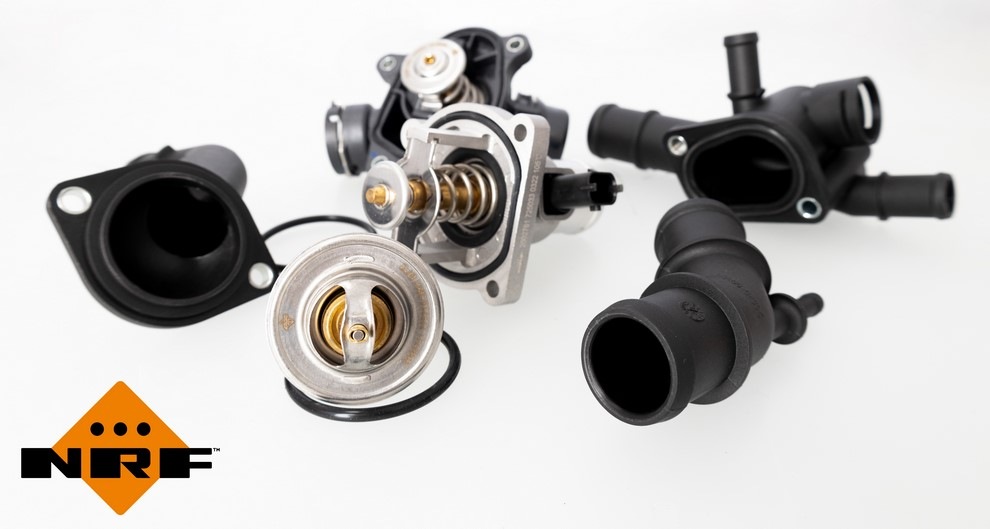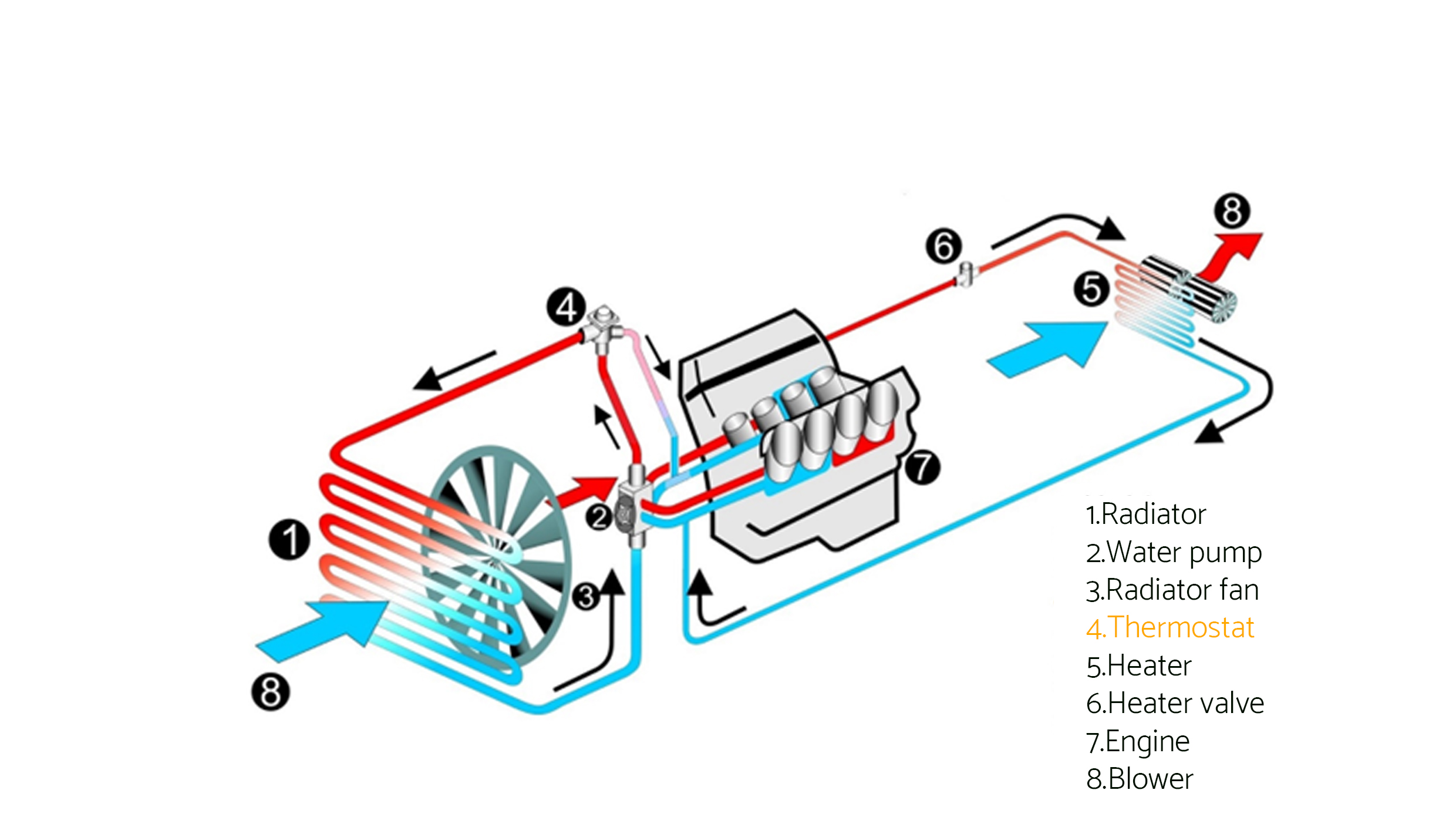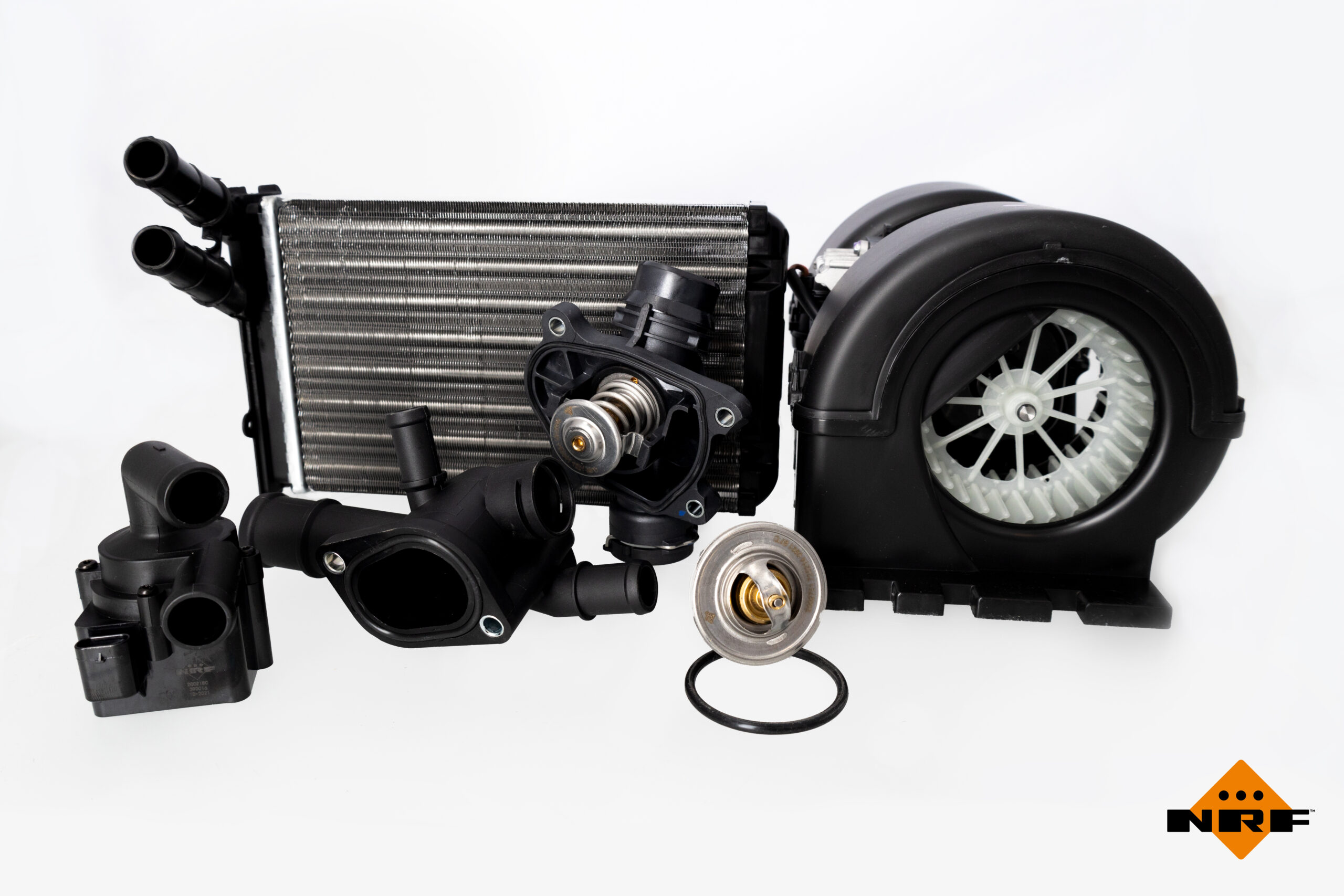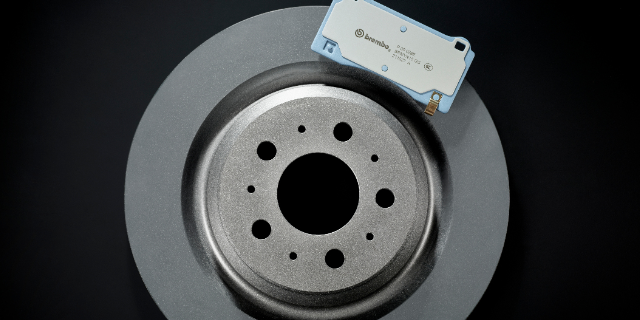Thermostat – an undervalued link in a vehicle’s cooling system.
The drivetrain in any vehicle works optimally under certain conditions. One of the main factors that affects drivetrain performance is the outside temperature. Typically in autumn and winter the performance of the car deteriorates due to the lower outside temperature. Tt is, therefore, worth paying attention to the condition of the drivetrain, giving special attention to the cooling system. This is because it is responsible for not only cooling the engine, but also ensuring the engine reaches and maintains the optimal operating temperature in cooler environmental conditions. It also provides the heat source to aid passenger comfort in the interior. This coiling system is In turn guarded by an inconspicuous valve, the thermostat.

Thermostats can be divided into two basic groups:
- conventional thermostats also known as cartridges are the first group, this encompasses the thermostat valve only
- thermostats cartridges combined with an enclosure, often with additional elements such as temperature sensors make up the second category. A further subgroup may be electronically controlled composite thermostats with housing – they contain a heating element. More about them later in the article.

Both the thermostat cartridge itself and the housing are made of corrosion-resistant materials.
Most often these are stainless steel or brass (cartridges), and aluminum or plastic (housings).
Basic functions of the thermostat:
|
 |
|
 |
|
 |
|
 |

 NRF has a range of more than 300 thermostats of all types in its protfolio. What’s more, the company is constantly working to expand its range.- In September 2022, following a positive reception to the initial product launch by NRF, a complementary product group was inaugurated: thermostat housings. With the introduction of 68 items corresponding to 150 original numbers, the Dutch company has secured a target group of potential customers of 56.5 million vehicles on European roads. The total number has increased by 70% . Nearly half of them are supplied with the necessary mounting elements and/or seals (NRF EasyFit).
NRF has a range of more than 300 thermostats of all types in its protfolio. What’s more, the company is constantly working to expand its range.- In September 2022, following a positive reception to the initial product launch by NRF, a complementary product group was inaugurated: thermostat housings. With the introduction of 68 items corresponding to 150 original numbers, the Dutch company has secured a target group of potential customers of 56.5 million vehicles on European roads. The total number has increased by 70% . Nearly half of them are supplied with the necessary mounting elements and/or seals (NRF EasyFit).
Working principle of the thermostat
When starting a cold engine, the coolant temperature is equal to the ambient temperature, which means that it is significantly lower than the operating temperature. To speed up the warm-up of the system, the thermostat remains closed blocking the flow of coolant through the radiator directing it only to the water jacket of the drive unit (the so-called small circuit). As the temperature rises, the thermostat valve begins to open allowing fluid to flow through the main radiator (the so-called large circuit). When the valve is in an intermediate position (between closed and fully open), some of the fluid is directed to the radiator, and it mixes with the hot coolant from the small circuit. The thermostat maintains the optimum system temperature by controlling the ratio of “hot” to “cold” fluid.

The general principle of the thermostat was developed as early as 1934 and is still successfully operating today. It is based on a wax expansion element. When the temperature of the coolant exceeds 80°, the process of changing the state of aggregation of the paraffin (located inside the thermostat) from solid to liquid begins. With the change in the state of aggregation comes an increase in pressure, which in turn causes the extension of the valve piston. At about 88°C (±5°C), the valve will close, while at ±100°C it should be fully open.

Electronically controlled thermostats
Both the design and operation of electronically controlled thermostats are very similar to conventional ones. However, they contain an additional element in the form of a heater controlled by the vehicle’s central unit. Thanks to this, under certain circumstances the flow of coolant in the large circuit can be increased. This occurs through additional heating of the wax in the expansion element and thus opening the valve wider. The circumstances mentioned are most often a significant load on the engine (e.g., during dynamic driving) or switching the drivetrain into maximum performance mode.
Typical failures of thermostats
- the most common cause of thermostat failure is immobilization of the valve caused by corrosion and/or contamination:
- a valve immobilized in the open position manifests itself by a slow rise in system temperature or the inability to reach optimum temperature.
- a valve immobilized in the closed position will lead to engine overheating
- leakage of coolant from under the thermostat housing
- mechanical failure of any of the components
- heating element of electronically controlled thermostats can suffer:
- advanced surface corrosion (high resistance)
- interruption of the heating element (no resistance)
in both cases, there may be a short circuit and blow the fuse
- damage to the plug or electrical installation
Electronically controlled thermostats can also experience faults caused by the temperature sensor or heating element. It is then necessary to focus on computer diagnostics, which is unfortunately not possible without a suitable interface. The most common error codes are:
P0597 – Thermostat Heater Control – Circuit Open
P0598 – Thermostat Heater Control – Circuit Low
P0599 – Thermostat Heater Control – Circuit High
P0128 – Coolant Thermostat – Coolant Temperature Below Thermostat Regulating Temperature
P1619 – Engine Coolant Thermostat Control Circuit – Signal Low (pojazdy marki BMW)
Preparing your car for winter – not just the thermostat.

As mentioned at the beginning of the article, the proper functioning of the cooling system is crucial for trouble-free operation of the vehicle during the cold weather season. The thermostat is an important, but not the only component. Therefore, NRF meets the needs of its customers by offering a very wide range of “winter products.” In addition to the heroes of this text, NRF’s offer includes heaters (more than 300 items), air blowers (more than 500) or additional water pumps (60) and 10000 other items dedicated to cars, vans and trucks. The full product catalog can be found webshop.nrf.eu.









